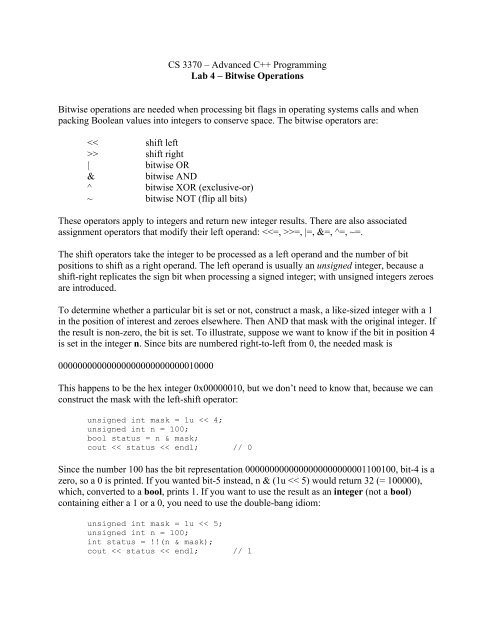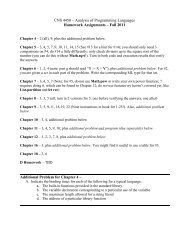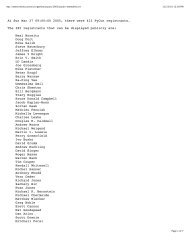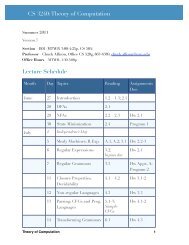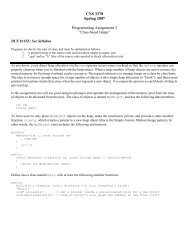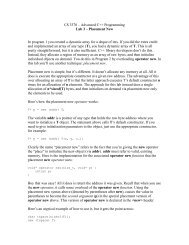CS 3370 â Advanced C++ Programming Lab 4 â Bitwise Operations ...
CS 3370 â Advanced C++ Programming Lab 4 â Bitwise Operations ...
CS 3370 â Advanced C++ Programming Lab 4 â Bitwise Operations ...
Create successful ePaper yourself
Turn your PDF publications into a flip-book with our unique Google optimized e-Paper software.
<strong>CS</strong> <strong>3370</strong> – <strong>Advanced</strong> <strong>C++</strong> <strong>Programming</strong><br />
<strong>Lab</strong> 4 – <strong>Bitwise</strong> <strong>Operations</strong><br />
<strong>Bitwise</strong> operations are needed when processing bit flags in operating systems calls and when<br />
packing Boolean values into integers to conserve space. The bitwise operators are:<br />
> shift right<br />
| bitwise OR<br />
&<br />
bitwise AND<br />
^<br />
bitwise XOR (exclusive-or)<br />
~ bitwise NOT (flip all bits)<br />
These operators apply to integers and return new integer results. There are also associated<br />
assignment operators that modify their left operand: =, |=, &=, ^=, ~=.<br />
The shift operators take the integer to be processed as a left operand and the number of bit<br />
positions to shift as a right operand. The left operand is usually an unsigned integer, because a<br />
shift-right replicates the sign bit when processing a signed integer; with unsigned integers zeroes<br />
are introduced.<br />
To determine whether a particular bit is set or not, construct a mask, a like-sized integer with a 1<br />
in the position of interest and zeroes elsewhere. Then AND that mask with the original integer. If<br />
the result is non-zero, the bit is set. To illustrate, suppose we want to know if the bit in position 4<br />
is set in the integer n. Since bits are numbered right-to-left from 0, the needed mask is<br />
00000000000000000000000000010000<br />
This happens to be the hex integer 0x00000010, but we don’t need to know that, because we can<br />
construct the mask with the left-shift operator:<br />
unsigned int mask = 1u
The value for status is !!(32) = !(0) = 1. The logical-not operator (!) converts a non-zero to zero<br />
and a 0 to 1.<br />
To set a bit, OR the mask with the number:<br />
mask = 1u
Exercise<br />
Write a class named BitWord that holds an unsigned int and implements the following<br />
interface:<br />
class BitWord<br />
{<br />
public:<br />
explicit Bits(unsigned int n = 0);<br />
void set(size_t pos);<br />
void reset(size_t pos);<br />
void flip(size_t pos);<br />
bool test(size_t pos) const;<br />
unsigned int extract(size_t m, size_t n) const;<br />
operator unsigned int () const;<br />
friend ostream& operator


